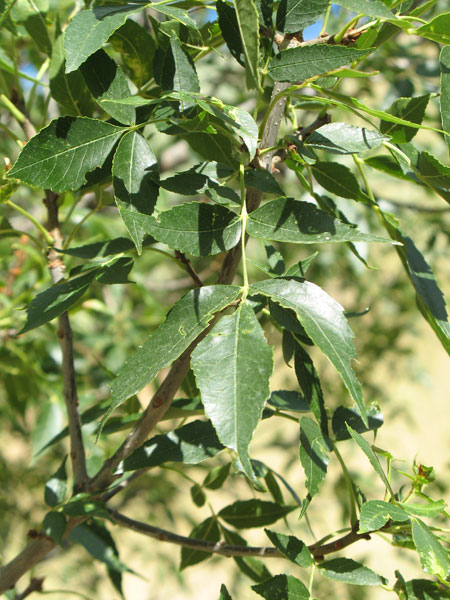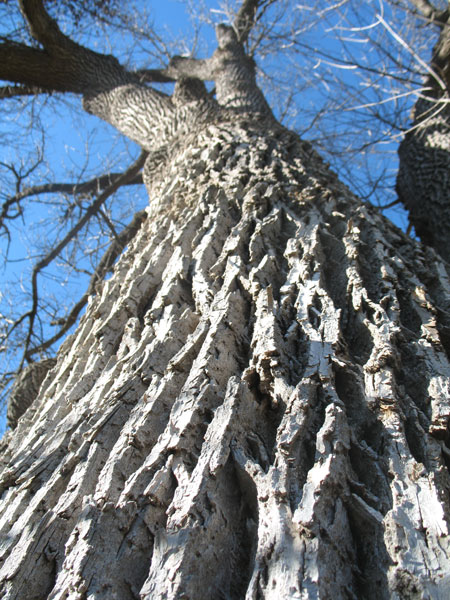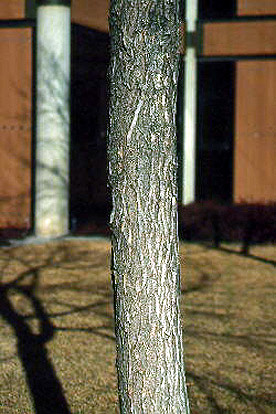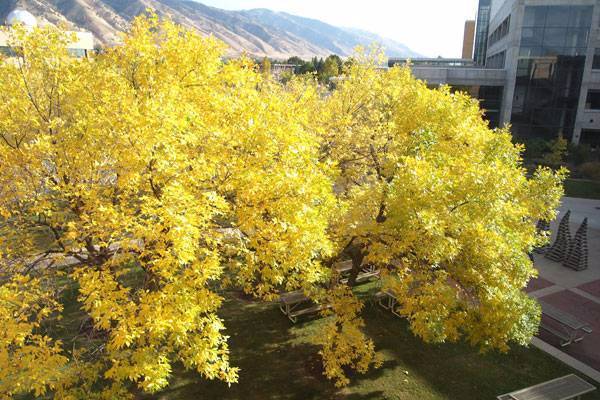Green Ash
Fraxinus pennsylvanica
Family: Oleaceae or Olive
Leaves: Opposite; once pinnately compound; 10" to 12" long; deciduous; 7-9 leaflets; leaflets oblong-lanceolate to elliptic, 4" to 6" long, glabrous above and pubescent below, bright green, finely serrate margin, short-stalked; turn bright yellow in fall.
Twigs/buds: Twigs fairly stout; gray to brown; leaf scar half-circular, straight or shallowly notched across the upper edge. Terminal bud rusty brown, conical, hairy; lateral buds smaller.
Flowers/fruit: Flowers dioecious; small and inconspicuous, arranged in clusters; appear in spring as leaves expand. Fruit a samara; 1" to 2-1/2" long, 1/4" wide; paddle-shaped in dense clusters; often clinging to twigs into or throughout the winter; abruptly narrowed wing along the slender seed cavity.
Bark: Ash-gray; sometimes with an orange tinge on younger trees; on older trees furrowed into diamond-shaped areas separated by narrow interlacing ridges; distinctive.
Wood: Important where native; sapwood white; heartwood light brown; growth rings distinct; ring-porous; rays not distinct; used for handles, tools, containers, furniture, lumber, etc.
General: Native from the Great Plains east, including southern Canada. Prefers moist sites, but fairly drought resistant and tolerant of fairly high soil pH. Intermediate shade tolerance.
Landscape Use: A tough, durable, large tree used extensively in Utah in landscapes since pioneer times. Also good for windbreaks. Lilac borers can be an especially severe problem that is difficult to treat effectively, though they may be most likely to affect stressed trees. I have seen many old green ashes that show no signs of borers, while a nearby young, vigorous, 30' tall tree might be riddled with borers. Seedless cultivars are available, but they can set large amounts of seed under stressful conditions. Zones 3- 9. Blue ash (Fraxinus quadrangulata) is a similar tree that can be planted and will do well in Utah. It differs from green ash in having twigs with four corky ridges and sharply serrate leaflets. Zones 4-7.
Comments & Limitations: May be insect and/or disease prone, especially when stressed.







